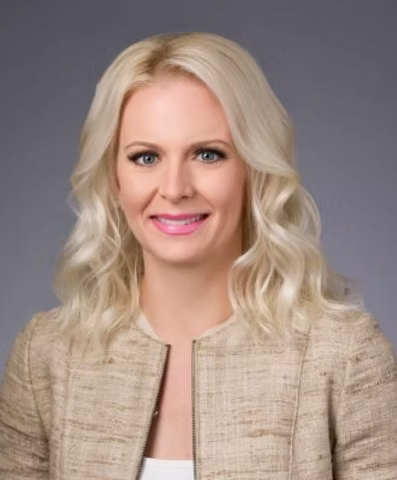Guide to Trust Administration After a Loved One's Passing
Sarah Ocampo
When someone passes away with a trust in place, their loved ones often find themselves navigating unfamiliar legal territory. A properly established trust can help avoid the probate process but doesn't eliminate the need for proper administration.
This blog post explains the essential steps to take when managing a trust after the trust maker's death.
Identifying the Successor Trustee
The first crucial step in trust administration is identifying who will manage the trust after the trustmaker's death. This person is formally known as the "successor trustee."
While the original trust maker typically serves as the initial trustee during their lifetime, the successor trustee assumes control of trust management responsibilities following the trust maker's passing.
The successor trustee is named in the trust document, so locating the original trust paperwork is an essential first step. If you're uncertain about who has been appointed as the successor trustee, a thorough review of the trust document will provide this critical information.
Statutory Requirements in Nevada
Trust administration isn't simply distributing assets according to the deceased's wishes. In Nevada, successor trustees must fulfill specific statutory requirements.
These legal obligations include:
1. Providing proper notice to creditors
2. Notifying all trust beneficiaries
3. Filing necessary legal documentation
4. Following specific timelines established by Nevada law
These requirements ensure transparency and protect the interests of all parties involved in the trust. Failure to adhere to these statutory obligations can result in legal complications and potential liability for the successor trustee.
The Trust Distribution Process
After fulfilling the preliminary legal requirements, the successor trustee must oversee the distribution of trust assets. This process typically involves:
Asset Inventory: Creating a comprehensive list of all assets held within the trust, including real estate properties, financial accounts, investments, and personal property.
Asset Valuation: Obtaining professional appraisals or assessments to determine the current value of trust assets.
Debt Resolution: Addressing outstanding debts or obligations before distributing assets to beneficiaries.
Tax Considerations: Working with tax professionals to address potential estate tax issues and file necessary tax returns.
Distribution Planning: Creating a strategic plan for distributing assets according to the terms outlined in the trust document.
Final Distribution: Transferring ownership of assets to the designated beneficiaries as specified in the trust.
Careful documentation is essential throughout this process. The successor trustee should maintain detailed records of all actions taken, communications with beneficiaries, and financial transactions related to the trust.
Professional Guidance Through Trust Administration
While some successor trustees may attempt to navigate the trust administration process independently, most find that professional legal guidance significantly reduces stress and ensures compliance with all legal requirements.
Trust administration involves complex legal procedures, and mistakes can have serious consequences. Professional attorneys specializing in estate planning and trust administration can:
- Interpret complex trust language
- Ensure compliance with all statutory requirements
- Assist with challenging asset valuations
- Mediate potential conflicts between beneficiaries
- Address unexpected complications that arise during administration
Most successor trustees ultimately retain legal counsel to represent them throughout the trust administration process. A skilled attorney ensures legal compliance and protects the successor trustee from potential personal liability.
Common Challenges in Trust Administration
Even with a well-drafted trust, successor trustees may encounter various challenges:
Ambiguous Trust Language: Sometimes, trust documents contain unclear provisions that require professional interpretation.
Difficult Beneficiaries: Conflicts may arise among beneficiaries who disagree with the trust's terms or the trustee's actions.
Complex Assets: Certain assets, such as business interests or unique property, may present valuation or distribution challenges.
Creditor Claims: Managing legitimate creditor claims while protecting trust assets requires careful navigation of legal requirements.
Professional guidance becomes particularly valuable when addressing these common challenges.
Next Steps for Successor Trustees
If you've been named as a successor trustee, consider taking these proactive steps:
- Locate and secure all trust documents
- Consult with an estate planning attorney who specializes in trust administration
- Create an inventory of trust assets
- Establish a communication plan for beneficiaries
- Develop a timeline for completing statutory requirements
- Maintain detailed records of all trust-related activities
For trust beneficiaries, understanding your rights and the overall trust administration process can help you set reasonable expectations and protect your interests.
Conclusion
Trust administration after death involves specific legal requirements and responsibilities that successor trustees must navigate carefully. While a properly established trust can streamline the asset distribution process compared to probate, it still requires diligent management and adherence to legal standards.
Professional legal guidance can provide invaluable support, whether you're a successor trustee facing new responsibilities or a beneficiary seeking to understand the process. Estate planning attorneys with expertise in trust administration can ensure compliance with all statutory requirements while protecting the interests of all parties involved.
If you're dealing with trust administration after a loved one's death, consulting with a qualified attorney who specializes in trust and estate law represents a prudent first step. Their expertise can help you navigate this complex process confidently and safely.




